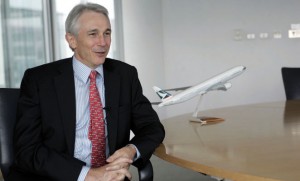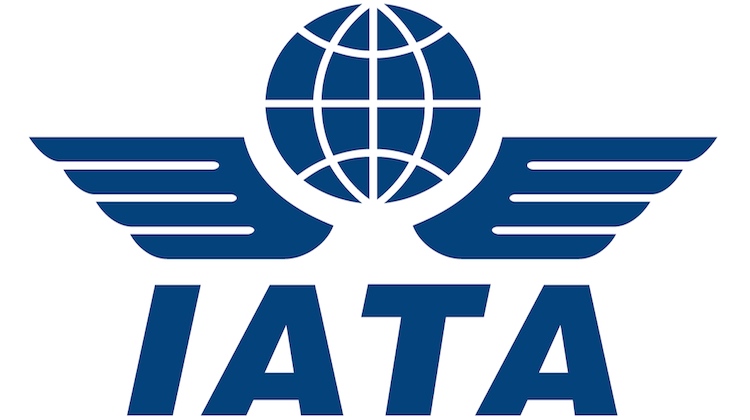Airlines around the world are expected to collectively generate US$36.3 billion in profits and return their cost of capital in 2016 amid strong demand for passenger travel, lower fuel prices and operational improvements.
The 2016 forecast, published by the International Air Transport Association (IATA) on Thursday (European time) in Geneva, represented a net profit margin of 5.1 per cent and an increase from the US$33.1 billion profit airlines are expected to post in 2015.
IATA director general Tony Tyler said the airlines were expected to achieve a return on capital of 8.3 per cent in 2015 and 8.6 per cent in 2016. The cost of capital is about seven per cent.
“The industry is surpassing an important benchmark,” Tyler said during the IATA global media day in Geneva in prepared remarks.
“So we are finally — after years of destroying capital — delivering the minimal level of profitability that an investor would expect.
“With average per passenger profit of less than $10, I would say that the profitability is still better described as fragile rather than sustainable. And, as I well know from decades in the industry, we should enjoy the benign trading conditions while they last but not get used to them.”

While lower oil prices – IATA forecast Brent crude oil to average US$55 a barrel in 2015 and US$51 a barrel in 2016 – supported the improved profitability, its impact had been offset by the strengthening of the US dollar.
IATA said demand for air travel was expected to grow 6.9 per cent in 2016, helping offset the sluggish growth in cargo volumes due to weakness in some trading markets. Further, cargo revenue was tipped to fall slightly in 2016.
“Passengers are benefiting from greater value than ever—with competitive airfares and product investments. Environmental performance is improving. More people and businesses are being connected to more places than ever. Employment levels are rising,” Tyler said.
In terms of the outlook for particular regions, North American carriers were expected to account for more than half the industry’s profits in both 2015 (US$19.4 billion) and 2016 (US$19.2 billion), with air travel boosted by a strengthening US economy, rising US dollar and following the recent consolidation among the major airlines.
Closer to home, Asia-Pacific carriers were forecast to post profits of US$6.6 billion in 2016, a US$800 million increase from 2015, with strong passenger growth offset by ongoing weakness in cargo revenues.
“Although the Chinese economy has slowed, air travel remains strong,” IATA said.
“The region’s carriers will benefit more fully from the impact of lower fuel prices in 2016 as hedges unwind. The region is, however, in the front line for the impact of continued weakness in cargo revenues.”
Qantas is forecast to deliver a bumper 2015/16 first half profit as the airline group benefits from lower fuel prices and its cost-cutting initiatives amid modest capacity growth in both the domestic and international market and a mixed Australian economy.
The airline’s chief executive Alan Joyce told shareholders at the company’s annual general meeting in Perth on October 23 trading for the first three months of 2015/16 had “improved relative to the prior period”.
“We expect a significant improvement in first half performance,” Joyce said.
Qantas reported net profit of $203 million in the first half of 2014/15, posting a return to profitability following a loss-making 2013/14 financial year.
Meanwhile, Virgin Australia reported a statutory net profit after tax for the three months to September 30 2015 of $1.7 million, bouncing back into profitability following a $59.1 million statutory loss in the prior corresponding period.
“We outlined at our 2015 financial year results in August that we expected to be profitable in 2016 and deliver a return on invested capital in line with our cost of capital – and I am pleased to confirm that we remain on track to meet this target,” Borghetti told shareholders at the company’s annual general meeting in Brisbane on November 18.
While describing the outlook for the industry as a “good news story”, Tyler cautioned that Africa and Latin America were still weak, while political instability in areas such as the Middle East had impacted regional carriers in that market.
“The industry’s results are good, but they are not outstanding when compared to the profits that are generated in other parts of the global economy,” Tyler said.
“The point that I want to make is that the airline industry has strengthened its profitability to an ordinary not an extraordinary level.
“The core of that success is primarily in North America. Large parts of the industry are still struggling—including some making losses.”
IATA has about 260 member airlines and represents roughly 83 per cent of global air traffic.
IATA chief economist Brian Pearce discusses the 2016 outlook
















